Related Research Articles

John Nash was one of the foremost British architects of the Georgian and Regency eras, during which he was responsible for the design, in the neoclassical and picturesque styles, of many important areas of London. His designs were financed by the Prince Regent and by the era's most successful property developer, James Burton. Nash also collaborated extensively with Burton's son, Decimus Burton.

Sir John Soane was an English architect who specialised in the Neo-Classical style. The son of a bricklayer, he rose to the top of his profession, becoming professor of architecture at the Royal Academy and an official architect to the Office of Works. He received a knighthood in 1831.

Greenwich Hospital was a permanent home for retired sailors of the Royal Navy, which operated from 1692 to 1869. Its buildings, initially Greenwich Palace, in Greenwich, London, were later used by the Royal Naval College, Greenwich and the University of Greenwich, and are now known as the Old Royal Naval College. The word "hospital" was used in its original sense of a place providing hospitality for those in need of it, and did not refer to medical care, although the buildings included an infirmary which, after Greenwich Hospital closed, operated as Dreadnought Seaman's Hospital until 1986.

Elias George Basevi FRS was a British architect who worked in both Neoclassical and Gothic Revival styles. A pupil of Sir John Soane, his designs included Belgrave Square in London, and the Fitzwilliam Museum in Cambridge. He was surveyor to the Guardian Assurance Company, to the Trustees of Smith's Charity and to the Thurloe estate.

St Thomas' Hospital is a large NHS teaching hospital in Central London, England. Administratively part of the Guy's and St Thomas' NHS Foundation Trust, together with Guy's Hospital, Evelina London Children's Hospital, Royal Brompton Hospital and other sites. It is also a member of King's Health Partners, an academic health science centre, and is one of three sites used by King's College London GKT School of Medical Education.

Regency architecture encompasses classical buildings built in the United Kingdom during the Regency era in the early 19th century when George IV was Prince Regent, and also to earlier and later buildings following the same style. The period coincides with the Biedermeier style in the German-speaking lands, Federal style in the United States and the French Empire style. Regency style is also applied to interior design and decorative arts of the period, typified by elegant furniture and vertically striped wallpaper, and to styles of clothing; for men, as typified by the dandy Beau Brummell and for women the Empire silhouette.
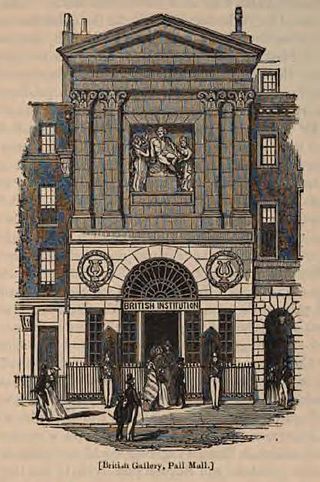
George Dance the Younger RA was an English architect and surveyor as well as a portraitist.
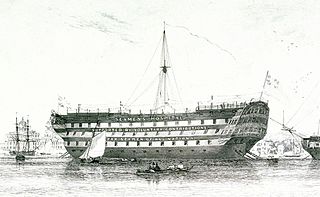
HMS Dreadnought was a Royal Navy 98-gun second rate. This ship of the line was launched at Portsmouth at midday on Saturday, 13 June 1801, after she had spent 13 years on the stocks. She was the first man-of-war launched since the Act of Union 1800 created the United Kingdom of Great Britain and Ireland, and at her head displayed a lion couchant on a scroll bearing the Royal arms as emblazoned on the Standard.
William Wilkins was an English architect, classical scholar and archaeologist. He designed the National Gallery and University College London, and buildings for several Cambridge colleges.
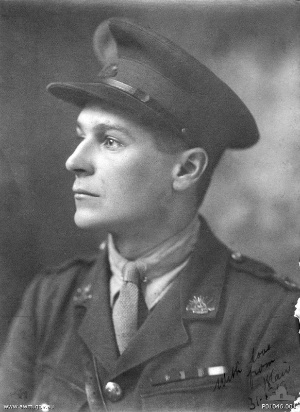
Blair Anderson Wark, was an Australian recipient of the Victoria Cross, the highest decoration for gallantry "in the face of the enemy" that can be awarded to members of the British and other Commonwealth armed forces. A quantity surveyor and member of the Citizens Military Force, Wark enlisted in the Australian Imperial Force on 5 August 1915, for service in the First World War. After initially being employed in the defence of the Suez Canal, his battalion was shipped to the Western Front; it was here that Wark was twice decorated for his bravery and leadership. Having received the Distinguished Service Order in 1917 for his actions at the Battle of Polygon Wood, Wark was awarded the Victoria Cross in 1918 for his leadership and gallantry when in temporary command of his battalion over a three-day period, while conducting operations against the Hindenburg Line.
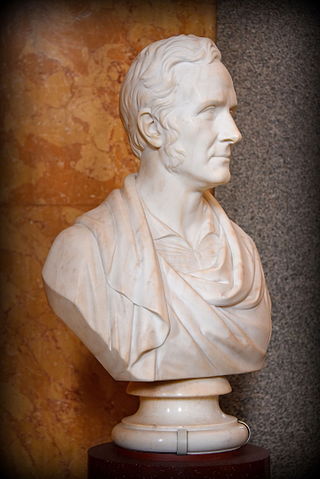
Sir Robert Smirke was an English architect, one of the leaders of Greek Revival architecture, though he also used other architectural styles. As an attached architect within the Office of Works, he designed several major public buildings, including the main block and façade of the British Museum and altered or repaired others. He was a pioneer in the use of structural iron and concrete foundations, and was highly respected for his accuracy and professionalism. His advice was often sought in architectural competitions and urban planning, especially later in his life.

Bellingham is a village and civil parish in Northumberland, to the north-west of Newcastle upon Tyne and is situated on the Hareshaw Burn at its confluence with the River North Tyne. In 2011 the parish had a population of 1334.
The Seafarers Hospital Society, formerly the Seamen's Hospital Society, is a charity for people currently or previously employed by the British Merchant Navy and fishing fleets, and their families. It was established in 1821.

William Blackburn (1750–1790) was an English architect and the leading prison architect of the Georgian-era. Following the principles of John Howard, his designs aimed to provide inmates with dry and airy cells.

Haughton Castle is a privately owned country mansion and Grade I listed building, situated to the north of the village of Humshaugh on the west bank of the North Tyne. It is around 5+1⁄2 miles (8.9 km) north of the market town of Hexham, Northumberland.

Lemmington Hall is an 18th-century country mansion incorporating a 15th-century tower house, situated near Edlingham, Northumberland, England. It is a Grade II* listed building. The original tower house built for the Beadnall family in the early 15th century was a four-storey construction which was reduced in height in the 17th century when Nicholas Fenwick converted the building into a country house.
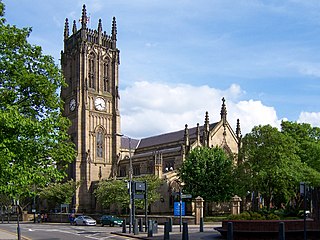
Robert Dennis Chantrell was an English church architect, best-known today for designing Leeds Parish Church, now Leeds Minster.

Blackberry Hill Hospital is an NHS psychiatric hospital in Fishponds, Bristol, England, specialising in forensic mental health services, operated by the Avon and Wiltshire Mental Health Partnership NHS Trust. The hospital also offers drug and alcohol rehabilitation inpatient services, and is the base for a number of community mental health teams.
James Spiller (c.1761–1829) was an English architect and surveyor, a close associate of Sir John Soane. His designs included the Church of St John-at-Hackney, and the Great Synagogue, London.
References
- 1 2 "Greystead, and Greystead Old Church". Greystead Holiday Cottages. Retrieved 30 May 2017.
- 1 2 "The contents of field notebook containing the continuation of St Johns the Baptist West Wickham Taken on 1st August 1891 - Leland L. Duncan Transcribed by Frank Bamping 5 March 2001". Kent Archaeological Society - West Wickham. Retrieved 30 May 2017.
- ↑ "Palace of Westminster, House of Lords. Designs, 1794-1795: Drawn by H H Seward". Sir John Soane's Museum Collection Online. Retrieved 30 May 2017.
- 1 2 "George Aitchison". Grace's Guide. Retrieved 30 May 2017.
- ↑ Historic England. "Dreadnought Seamens Hospital (1150391)". Research records (formerly PastScape). Retrieved 30 May 2017.
- 1 2 "St. Peter's Church, Humshaugh". Humshaugh Benefice. Retrieved 30 May 2017.
- 1 2 3 4 5 Pevsner, Nikolaus (1992). Buildings of England: Northumberland. Yale University Press. p. 107. ISBN 9780300096385.
- 1 2 "Bristol New Gaol". Bristol Museums. Retrieved 30 May 2017.
- ↑ Roberts, Jane (1997). Royal Landscape: The Gardens and Parks of Windsor. Yale University Press. p. 515. ISBN 9780300070798.
- ↑ "Documents in the Public Record Office, Kew". Charles Babbage's First Difference Engine. 21 September 2014. Retrieved 30 May 2017.
- ↑ Churchill, Penny (4 July 2015). "Dream country houses for sales". Country Life. Retrieved 30 May 2017.
- ↑ "New Court". A Thousand Years of Building with Stone. Retrieved 30 May 2017.
- ↑ Historic England. "ST MARTIN IN THE FIELDS ALMSHOUSES, NUMBERS 1-9 (1272268)". National Heritage List for England . Retrieved 30 May 2017.
- 1 2 "Hexham, Northumberland". VisitorUK.com. Retrieved 30 May 2017.
- ↑ "St Michael's Church". Undiscovered Scotland. Retrieved 30 May 2017.
- ↑ "Wark-on-Tyne Northumberland Extensive Urban Survey (p.20)" (PDF). Northumberland County Council. Retrieved 30 May 2017.[ permanent dead link ]
- ↑ "Ledbury Park (New House)". A Thousand Years of Building with Stone. Retrieved 30 May 2017.
- ↑ "The Clifton Spa Pumproom". Spas Directory. Retrieved 30 May 2017.